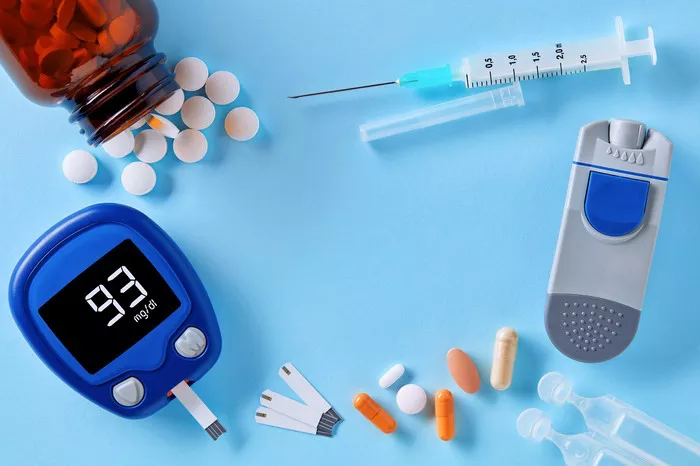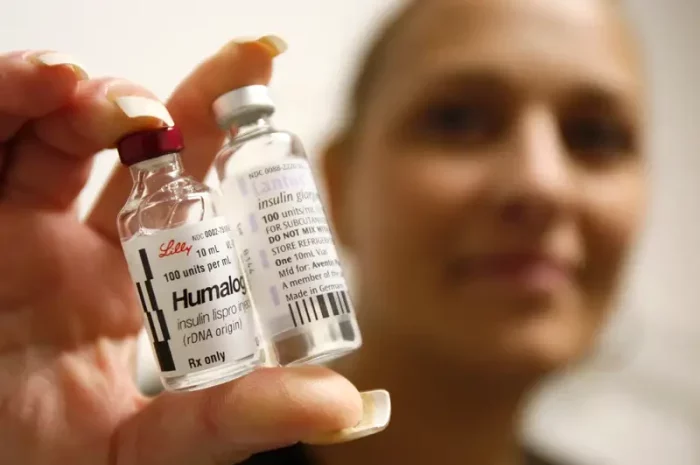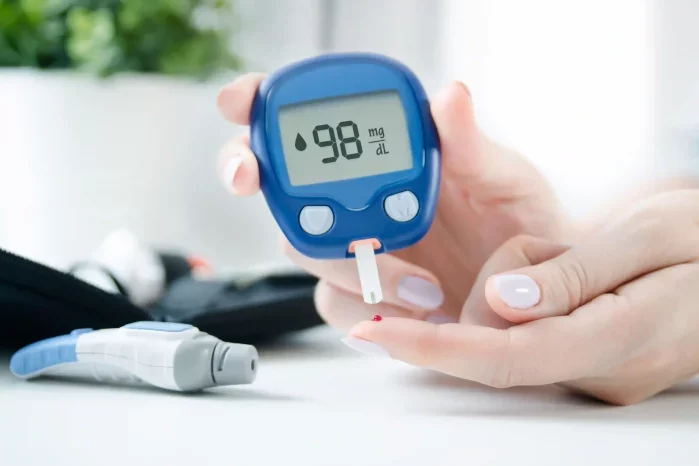Type 1 diabetes is an autoimmune condition where the body’s immune system attacks and destroys the insulin-producing beta cells in the pancreas. As a result, individuals with type 1 diabetes require lifelong insulin therapy to manage blood glucose levels. Insulin therapy aims to mimic the body’s natural insulin production, which requires an understanding of the various types of insulin available. This article delves into the five main types of insulin used in type 1 diabetes management: rapid-acting, short-acting, intermediate-acting, long-acting, and ultra-long-acting insulin. Each type has unique properties and applications, and understanding these can help optimize diabetes management.
Rapid-Acting Insulin
Rapid-acting insulin is designed to act quickly, making it suitable for controlling blood glucose spikes that occur after meals. This type of insulin begins to work within 10-30 minutes of injection, peaks in about 30-90 minutes, and lasts for 3-5 hours. The primary goal of rapid-acting insulin is to mimic the body’s natural insulin response to food intake.
Types of Rapid-Acting Insulin
Insulin Lispro (Humalog)
Insulin Aspart (NovoLog)
Insulin Glulisine (Apidra)
Mechanism of Action
Rapid-acting insulins are analogs of human insulin, modified at the molecular level to enhance their absorption and onset of action. For example, insulin lispro has a reversed order of amino acids at positions 28 and 29 in the insulin B-chain, which reduces its tendency to form hexamers, thus allowing quicker absorption into the bloodstream.
Clinical Use
Patients typically use rapid-acting insulin in a bolus regimen, which involves administering it before meals to manage postprandial blood glucose levels. Additionally, it is used in insulin pumps for continuous subcutaneous insulin infusion (CSII), providing a more physiological insulin delivery method.
Advantages
- Rapid Onset: Ideal for mealtime glucose control.
- Flexible Dosing: Can be adjusted based on carbohydrate intake and blood glucose levels.
Disadvantages
- Risk of Hypoglycemia: If meals are delayed or skipped after injection.
- Short Duration: May require multiple injections throughout the day.
Short-Acting Insulin
Short-acting insulin, also known as regular insulin, has a slower onset and longer duration of action compared to rapid-acting insulin. It begins to work within 30 minutes to an hour, peaks at 2-3 hours, and lasts for 5-8 hours.
Types of Short-Acting Insulin
Regular Insulin (Humulin R, Novolin R)
Mechanism of Action
Regular insulin is identical to endogenous human insulin. It is typically injected subcutaneously but can also be administered intravenously in hospital settings for managing acute hyperglycemia or diabetic ketoacidosis.
Clinical Use
Short-acting insulin is often used in combination with intermediate-acting insulin in a basal-bolus regimen. It is also suitable for use in sliding scale therapy, where the dose is adjusted based on blood glucose readings.
Advantages
- Versatile: Suitable for both subcutaneous and intravenous administration.
- Longer Duration: Provides extended coverage compared to rapid-acting insulin.
Disadvantages
- Slower Onset: Less effective for mealtime glucose control.
- Increased Risk of Hypoglycemia: Due to its longer action profile, which can overlap with subsequent meals.
Intermediate-Acting Insulin
Intermediate-acting insulin has an onset of action of 1-2 hours, peaks at 4-12 hours, and lasts for 12-18 hours. This type of insulin is often used to provide basal insulin coverage, maintaining blood glucose levels throughout the day and night.
Types of Intermediate-Acting Insulin
NPH Insulin (Humulin N, Novolin N)
Mechanism of Action
NPH (Neutral Protamine Hagedorn) insulin is regular insulin combined with protamine, a protein that delays its absorption. This modification extends the duration of action, making it suitable for maintaining baseline insulin levels.
Clinical Use
Intermediate-acting insulin is commonly used in combination with short-acting or rapid-acting insulin in a basal-bolus regimen. It is typically administered twice daily to provide around-the-clock insulin coverage.
Advantages
- Longer Duration: Provides extended insulin coverage.
- Cost-Effective: Generally less expensive than long-acting insulins.
Disadvantages
- Peak Action: Can increase the risk of hypoglycemia, especially during the peak period.
- Variable Absorption: Can lead to unpredictable blood glucose levels.
Long-Acting Insulin
Long-acting insulin is designed to provide a steady, basal level of insulin over an extended period, typically 24 hours. This type of insulin has a slow onset and no pronounced peak, reducing the risk of hypoglycemia.
Types of Long-Acting Insulin
Insulin Glargine (Lantus, Basaglar)
Insulin Detemir (Levemir)
Mechanism of Action
Long-acting insulins are analogs of human insulin modified to release insulin slowly and steadily. For example, insulin glargine forms microprecipitates in the subcutaneous tissue, which slowly dissolve to provide a consistent release of insulin.
Clinical Use
Long-acting insulin is typically administered once daily to provide basal insulin coverage. It can be used in combination with rapid-acting or short-acting insulin for mealtime glucose control.
Advantages
- Steady Release: Reduces the risk of hypoglycemia.
- Convenient Dosing: Typically requires only one injection per day.
Disadvantages
- Cost: Generally more expensive than intermediate-acting insulin.
- Injection Site Reactions: Possible at the site of administration.
Ultra-Long-Acting Insulin
Ultra-long-acting insulin is the latest advancement in insulin therapy, providing basal insulin coverage for more than 24 hours. This type of insulin offers a consistent and prolonged insulin release, minimizing blood glucose fluctuations.
Types of Ultra-Long-Acting Insulin
Insulin Degludec (Tresiba)
Insulin Glargine U-300 (Toujeo)
Mechanism of Action
Ultra-long-acting insulins have unique modifications that extend their duration of action. Insulin degludec forms multi-hexamers upon injection, which slowly dissociate to release insulin over an extended period.
Clinical Use
Ultra-long-acting insulin is typically administered once daily, providing a stable and prolonged basal insulin level. It is particularly beneficial for individuals with erratic schedules or those who experience significant blood glucose variability.
Advantages
- Extended Duration: Provides consistent insulin coverage for over 24 hours.
- Flexibility: Allows for flexible dosing times without compromising efficacy.
Disadvantages
- Cost: Generally more expensive than other types of insulin.
- Limited Availability: Not as widely available as other insulin types.
See alsoInformation On Juvenile Diabetes
Conclusion
Understanding the different types of insulin is crucial for effective type 1 diabetes management. Each type of insulin—rapid-acting, short-acting, intermediate-acting, long-acting, and ultra-long-acting—has unique properties that cater to specific needs in diabetes care. Rapid-acting insulin is ideal for mealtime glucose control, while short-acting insulin offers versatile administration options. Intermediate-acting insulin provides extended coverage but requires careful management to avoid hypoglycemia. Long-acting insulin offers steady basal insulin levels with reduced hypoglycemia risk, and ultra-long-acting insulin provides consistent coverage with flexible dosing options.
Choosing the right type of insulin and tailoring the regimen to an individual’s lifestyle and needs can significantly improve diabetes control and quality of life. Advances in insulin therapy continue to enhance our ability to manage type 1 diabetes effectively, offering hope and improved outcomes for those living with this condition.
Related topics:
What Is The Difference Between Type One And Two Diabetes

























